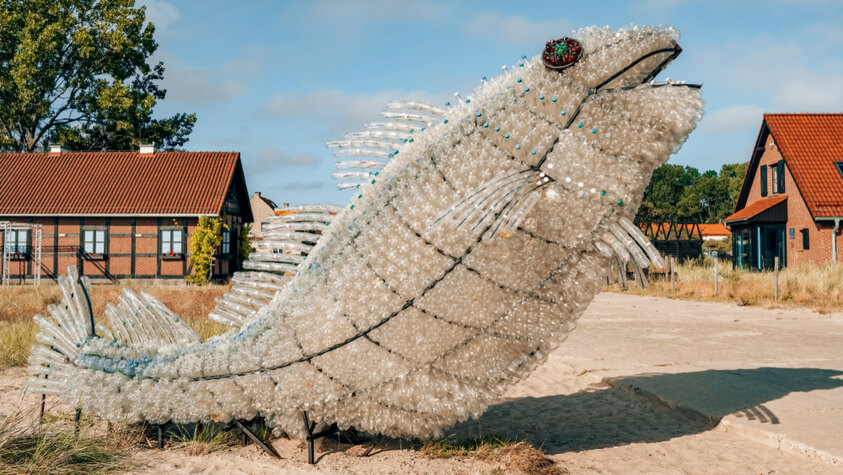By TACP Staff on July 08, 2021

Found artists take materials they have discovered and present them in an unusual and unique manner. Central to the art form is the repurposing of non-artistic, functional material objects to create a cohesive representation of the artist’s objective. Originating from the French objet trouvé, the first widely-recognized publication of the genre was in 1912, with Pablo Picasso’s piece “Still Life with Chair Caning.”
Found art is an unusual type of art that involves creating pieces from “found” objects that are not usually considered to be artistic in any way. Most of the objects used in found art usually have another purpose, and they are usually modified in some way to make them into a piece of art.
Artists that use found objects may use several methods to modify the everyday objects that they use. This can include painting them or cutting them, or even securing several objects together to form a unique sculpture.
Strictly speaking, a found artist obtains everyday or unusual items and assembles them into artistic structures. Although this usually entails creating sculptures, some of these artists will also make collages and paintings as well.
The process of creating a piece of found art varies from artist to artist. Some artist, for instance, will start with a firm idea of what they want their piece to look like, then they will go about collecting the necessary materials. Other artists, however, may simply look through their materials and create a piece from what they already have.
Objects for found art can be obtained a few different ways. Some artists simply use everyday household objects that they have lying around their homes, while others might scour thrift stores and garage sales in hopes of finding something useful. Mother nature is another excellent supplier of materials needed to create found art.
A few “found artists” may even use other people’s discarded items or trash. In fact, one offshoot of found art is commonly referred to as “trash art”. Artists who create trash art pride themselves in creating masterpieces out of piles of garbage. Many of these artists usually pride themselves on being environmentally conscious, and their artwork is often a statement toward recycling and keeping discarded objects out of landfills.
By far, creativity is the most important skill to have in order to have a successful career in found art. The ability to think outside the box is a must when creating found art. An artist must be able to look past traditional types of art, and he must be able to visualize ordinary everyday objects in extraordinary ways.
A found artist should also enjoy working with his hands. Other artistic skills, such as sculpting and painting, are also very helpful when pursuing this type of career.
Found art is not a traditional type of art, and not many schools will offer classes in this, let alone degrees. Individuals interested in found art as a career, however, should not simply give up on a valuable art education.
Instead, they should take advantage of the number of different art schools and possibly earn a degree in art history, fine art, sculpting, painting, drawing, or photography. The skills learned in these types of degree programs will often be very useful in developing the skills necessary to have a successful found art career. A degree in another area will also act as a safety net, in case a student’s found art career doesn’t take off as expected.
Found art technically falls under the category of fine art, and the Bureau of Labor Statistics estimated that fine artists, including sculptors and painters, earned an average annual salary of $48,960 in 2018. Pinpointing a salary for an individual with a career in found art can be very difficult, however. An artist’s talent, as well as the demand for his artwork, will often determine the amount of money he will make. Some artists may make nothing during their found art careers, for instance, simply because there is no demand for their artwork. Others may be able to make a living wage, but only if they live in an area where found art is accepted and in demand.
Related: How to Make Money as an Artist
Depending on the success of the artist, found art can be displayed in a number of different places. Some artists, for instance, simply create masterpieces for their own personal pleasure. They will often display their art in and around their home, with no desire to see it elsewhere. Modern art museums might also display pieces of found art. Sometimes, these exhibits will consist of pieces from several different artists. If an artist is particularly talented, however, a museum may commission him to create several different pieces to display for his own art show. Art shows allow artists to showcase their work and, in some cases, attract prospective buyers. Private collectors and businesses, for instance, may purchase and display pieces of found art. Some municipalities might also commission artists to create unique pieces of art for public display.
Consider these related careers in Craft and Fine Art.

The Art Career Project is a trusted resource for emerging and professional artists.